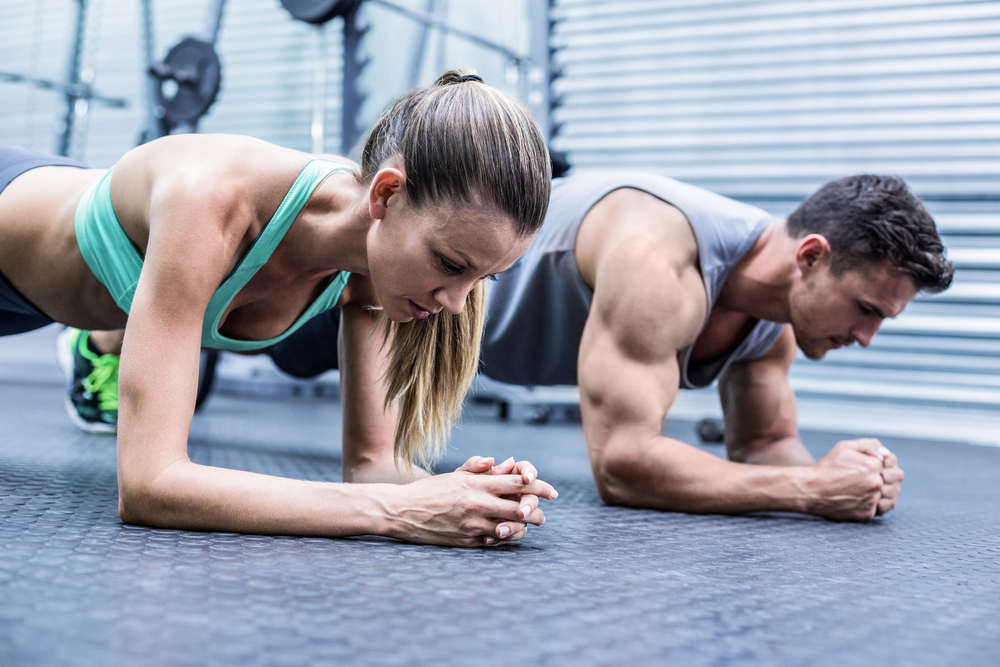
Mobility is one of the most overlooked yet essential components of athletic performance. While strength and endurance often take center stage, mobility provides the foundation for safe, efficient, and powerful movement. Without it, athletes risk limited performance, poor mechanics, and higher chances of injury.
For athletes in Scottsdale, investing in mobility isn’t just about stretching—it’s about developing the ability to move freely and with control through the ranges required in sport and fitness. At Pinnacle Performance & Wellness, mobility training is a key part of athlete physical therapy, helping athletes build strength and resilience while staying healthy and competitive.
READ: 5 CrossFit Injuries We See Every Week — And How to Fix Them
This guide highlights the top three areas every athlete should focus on to unlock greater performance and reduce the risk of setbacks.
 Area 1: Hip Mobility for Power and Stability
Area 1: Hip Mobility for Power and Stability
The hips are one of the most important joints for athletic performance. Nearly every sport relies on strong, mobile hips for power, stability, and efficient movement. From sprinting to squatting to rotational movements, hip mobility is at the center of athletic success.
Why Hip Mobility Matters
When the hips move freely, athletes can generate more power, maintain proper alignment, and reduce strain on surrounding joints. Limited hip mobility, on the other hand, often leads to compensations in the lower back, knees, or hamstrings—common sources of pain and injury.
Mobility Work in Athlete Physical Therapy
Therapists often use a combination of manual techniques, targeted stretches, and corrective exercises to restore hip motion. Strengthening the supporting muscles ensures that new ranges of motion are stable and functional for sport-specific demands.
By focusing on hip mobility, athletes gain a stronger foundation for explosive power, smoother movement, and reduced risk of setbacks.
Area 2: Shoulder Mobility for Strength and Overhead Movement
The shoulders play a critical role in athletic performance, especially in sports that involve throwing, lifting, or rotational movements. Optimal shoulder mobility allows athletes to generate strength and speed while protecting the joint from excessive stress.
Why Shoulder Mobility Matters
Restricted shoulder mobility can lead to poor mechanics, which may place undue strain on the neck, upper back, or elbows. Over time, this increases the risk of overuse injuries such as impingement, rotator cuff strains, or tendonitis.
Mobility Work in Athlete Physical Therapy
In therapy, restoring shoulder mobility often involves a combination of soft tissue work, joint mobilizations, and corrective exercises to strengthen stabilizing muscles like the rotator cuff and scapular stabilizers. This ensures the shoulder moves freely while remaining strong and supported.
Athletes who prioritize shoulder mobility benefit from greater strength overhead, more efficient mechanics, and improved performance across a variety of sports.
Area 3: Ankle Mobility for Speed and Agility
The ankles are the foundation of nearly every athletic movement. Running, jumping, cutting, and even maintaining balance all depend on healthy ankle mobility. When the ankles move freely, athletes can generate power from the ground up and perform with greater efficiency.
Why Ankle Mobility Matters
Limited ankle mobility often forces the body to compensate in the knees or hips, increasing the risk of injury. Common issues like shin splints, knee pain, or Achilles discomfort can often be traced back to restricted ankle motion.
Mobility Work in Athlete Physical Therapy
Therapists use joint mobilizations, stretching, and strengthening exercises to restore proper ankle range of motion. Balance and stability drills are also integrated to help athletes apply this mobility in dynamic movements.
With improved ankle mobility, athletes gain better stride efficiency, quicker change of direction, and stronger overall athletic performance.
Integrating Mobility Work Into Training
Mobility isn’t something athletes can address once and forget about. It needs to be built into regular training to provide lasting benefits. When mobility work is combined with strength, endurance, and skill training, athletes can move more efficiently and perform at their peak.
Making Mobility a Habit
Short, focused mobility sessions can be added as warm-ups, cool-downs, or active recovery. Consistency is key—regular practice ensures progress carries over into daily movement and athletic performance.
The Role of Athlete Physical Therapy
In athlete physical therapy, mobility training is integrated with corrective exercise and performance-based strategies. This ensures mobility gains aren’t just temporary but supported by strength and stability for long-term results.
By weaving mobility into training routines, athletes can maintain healthy joints, reduce injury risk, and perform with greater freedom and power.
READ: From Box to Barbell: How Pinnacle Helps CrossFit Athletes Stay Strong and Pain-Free
How Pinnacle Performance & Wellness Helps Scottsdale Athletes Stay Mobile
At Pinnacle Performance & Wellness, mobility is seen as a cornerstone of athletic performance and long-term health. Our team integrates mobility work into every athlete’s personalized program, ensuring that progress in flexibility and movement carries over into strength, stability, and sport performance.
A Personalized Approach to Athlete Physical Therapy
Every athlete we work with receives one-on-one care designed to address their specific limitations and goals. Whether it’s restoring hip function, improving overhead strength, or enhancing ankle stability, our therapists tailor mobility work to each individual.
Services for Athletes in Scottsdale
From physical therapy and golf-specific programs to personal training, our services support athletes across a variety of sports and fitness levels. Each program is designed to build stronger, more resilient bodies.
How to Get Started
Athletes ready to improve mobility and unlock peak performance can contact us to schedule an appointment. Our team is here to help Scottsdale athletes move better, recover faster, and stay at the top of their game.


Leave Your Comment Here